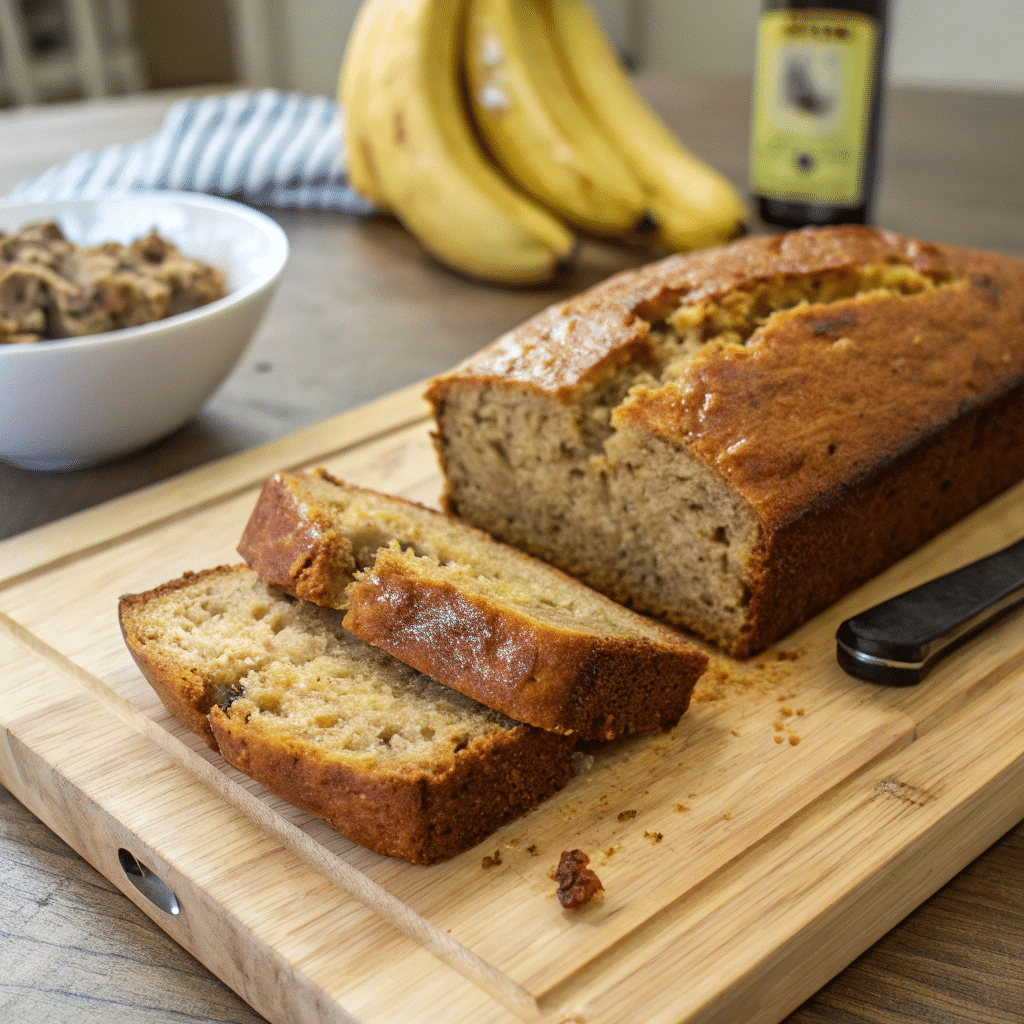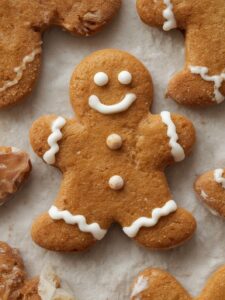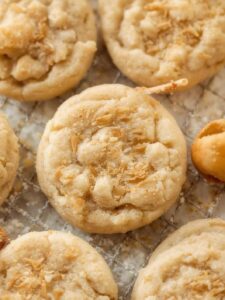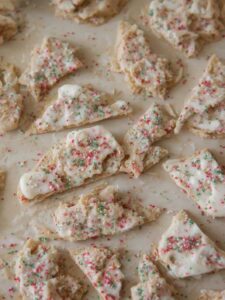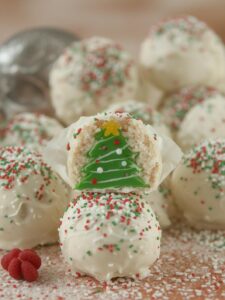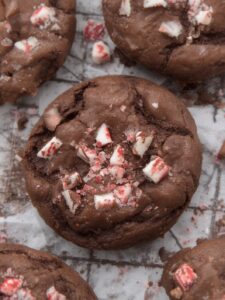Banana bread is one of those classic comfort foods that never goes out of style. Its moist texture, natural sweetness, and warm aroma make it a favorite for breakfast, snacks, or even dessert. But what if you’re out of baking soda? Or maybe you simply prefer recipes that don’t rely on it? Don’t worry—you can still bake a tender, flavorful loaf without this common ingredient. In this guide, we’ll cover everything you need to know about making banana bread without baking soda, from ingredient substitutions to foolproof steps, storage tips, and common mistakes to avoid. If you’ve ever asked yourself, “Can I make banana bread without baking soda?”—this article has all the answers.
Looking for inspiration? Try this Baking Soda Trick for Men Recipe that’s also trending for its detox power.
Table of Contents
ToggleBanana Bread Recipe No Baking Soda
Why People Search for Banana Bread Recipe No Baking Soda
Many home bakers search for banana bread recipes without baking soda because they’ve run out of it, or they prefer not to use it for dietary or taste reasons. Baking soda is a leavening agent that helps bread rise, but it isn’t absolutely essential. By using substitutes like baking powder or self-rising flour, you can still achieve a fluffy, soft loaf. Some people even enjoy banana bread that’s denser and more cake-like, which naturally happens when baking soda is left out.
Common Misconceptions About Baking Soda in Banana Bread
One common misconception is that banana bread won’t rise at all without baking soda. While it may not be as tall as traditional versions, the right substitutes provide structure and lift. Another myth is that the flavor will drastically change—this isn’t true. In fact, many bakers find that banana bread without baking soda tastes slightly sweeter and more natural, letting the banana flavor shine through.
Looking for inspiration? Try this Baking Soda and Apple Cider Vinegar that’s also trending for its detox power.
Print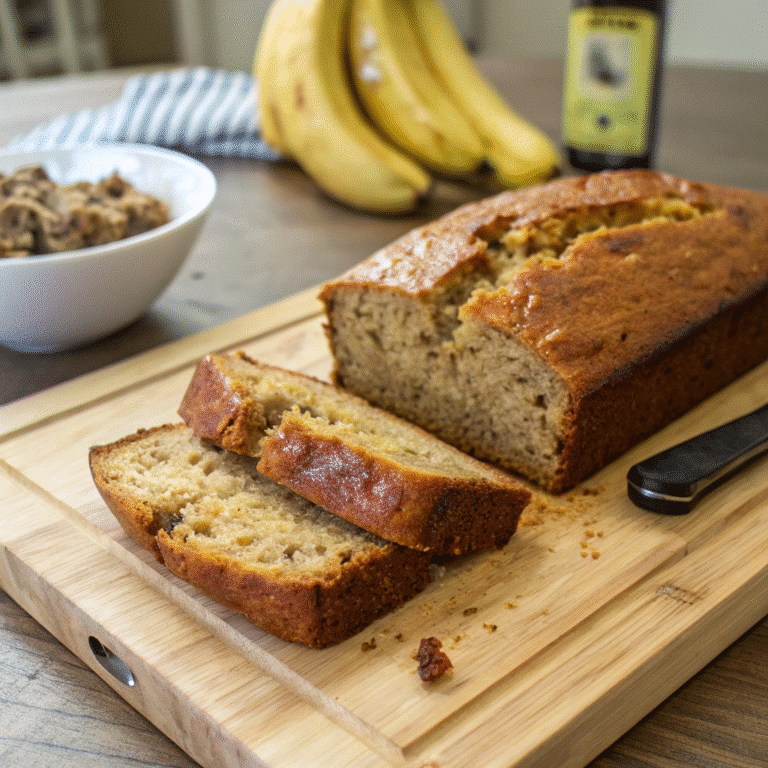
Banana Bread Recipe No Baking Soda – Easy, Delicious & Foolproof
5 Stars 4 Stars 3 Stars 2 Stars 1 Star
No reviews
A moist, fluffy banana bread recipe made without baking soda—perfectly sweet, soft, and easy to customize with your favorite mix-ins.
- Total Time: 1 hour 5 minutes
- Yield: 1 loaf (8-10 slices) 1x
Ingredients
3 ripe bananas, mashed
1/2 cup unsalted butter, melted
2 large eggs
3/4 cup granulated sugar
1/4 cup milk
1 3/4 cups all-purpose flour
2 teaspoons baking powder
1/2 teaspoon salt
1 teaspoon vanilla extract
Optional: 1/2 cup chopped walnuts or chocolate chips
Optional: 1/2 teaspoon ground cinnamon
Instructions
1. Preheat oven to 350°F (175°C). Grease a 9×5-inch loaf pan or line with parchment paper.
2. In a large mixing bowl, mash the bananas until mostly smooth with some small lumps.
3. Whisk in melted butter, eggs, milk, vanilla extract, and sugar until well combined.
4. In a separate bowl, sift together the flour, baking powder, salt, and optional cinnamon.
5. Gradually fold the dry ingredients into the wet mixture until just combined. Do not overmix.
6. If using mix-ins like nuts or chocolate chips, gently fold them in now.
7. Pour the batter into the prepared loaf pan and smooth the top with a spatula.
8. Bake for 50–60 minutes, or until a toothpick inserted in the center comes out clean.
9. Let the banana bread cool in the pan for 10 minutes, then transfer to a wire rack to cool completely.
10. Slice and enjoy warm, at room temperature, or toasted with your favorite spread.
Notes
This banana bread stays moist for days if stored in an airtight container at room temperature. You can also freeze individual slices for easy snacking later. If you prefer a tangier flavor, substitute milk with buttermilk or yogurt. For a healthier version, try replacing half the flour with whole wheat flour or oat flour.
- Author: Jessica Lupone!
- Prep Time: 10 minutes
- Cook Time: 55 minutes
- Category: Dessert
- Method: Baking
- Cuisine: American
- Diet: Vegetarian
Nutrition
- Serving Size: 1 slice
- Calories: 210
- Sugar: 14g
- Sodium: 180mg
- Fat: 9g
- Saturated Fat: 5g
- Unsaturated Fat: 3g
- Trans Fat: 0g
- Carbohydrates: 30g
- Fiber: 2g
- Protein: 3g
- Cholesterol: 45mg
Ingredients Needed for Banana Bread Recipe No Baking Soda
Essential Ingredients for Moist Banana Bread
When making a banana bread recipe no baking soda, the ingredients remain simple and pantry-friendly. The stars of the recipe are ripe bananas—overripe with brown spots work best because they add natural sweetness and a creamy texture. You’ll also need flour, sugar, eggs, butter or oil, and milk. Each ingredient has a role: flour provides structure, sugar adds sweetness, eggs bind everything together, and butter or oil keeps the loaf moist.
To keep your bread light without baking soda, you’ll often replace it with baking powder. Unlike baking soda, which needs an acid to activate, baking powder contains both the acid and the base, making it perfect for banana bread that rises evenly.
Best Substitutes for Baking Soda in Banana Bread
If you don’t have baking soda on hand, here are some reliable substitutes that work well in banana bread:
| Substitute | How to Use | Notes |
|---|---|---|
| Baking Powder | 3 tsp baking powder for every 1 tsp baking soda | Best 1:1 replacement for rise |
| Self-Rising Flour | Replace all-purpose flour with self-rising flour | Contains leavening agents already |
| Yogurt or Buttermilk | Use ½ cup yogurt or buttermilk and reduce other liquids | Adds tangy flavor and moisture |
| Vinegar + Baking Powder | 1 tsp vinegar with baking powder | Extra boost in rise |
These substitutions ensure that your banana bread stays soft and flavorful even without baking soda.
Optional Add-ins for Extra Flavor
Banana bread is endlessly customizable, and skipping baking soda doesn’t limit your creativity. Here are some tasty add-ins:
- Nuts: Walnuts, pecans, or almonds for crunch.
- Chocolate Chips: Semi-sweet or dark chocolate pairs perfectly with bananas.
- Spices: Cinnamon, nutmeg, or cardamom for warmth.
- Dried Fruit: Raisins, cranberries, or chopped dates for sweetness.
- Seeds: Chia or flaxseeds for extra nutrition.
These additions enhance both texture and flavor, giving your loaf a personal twist.
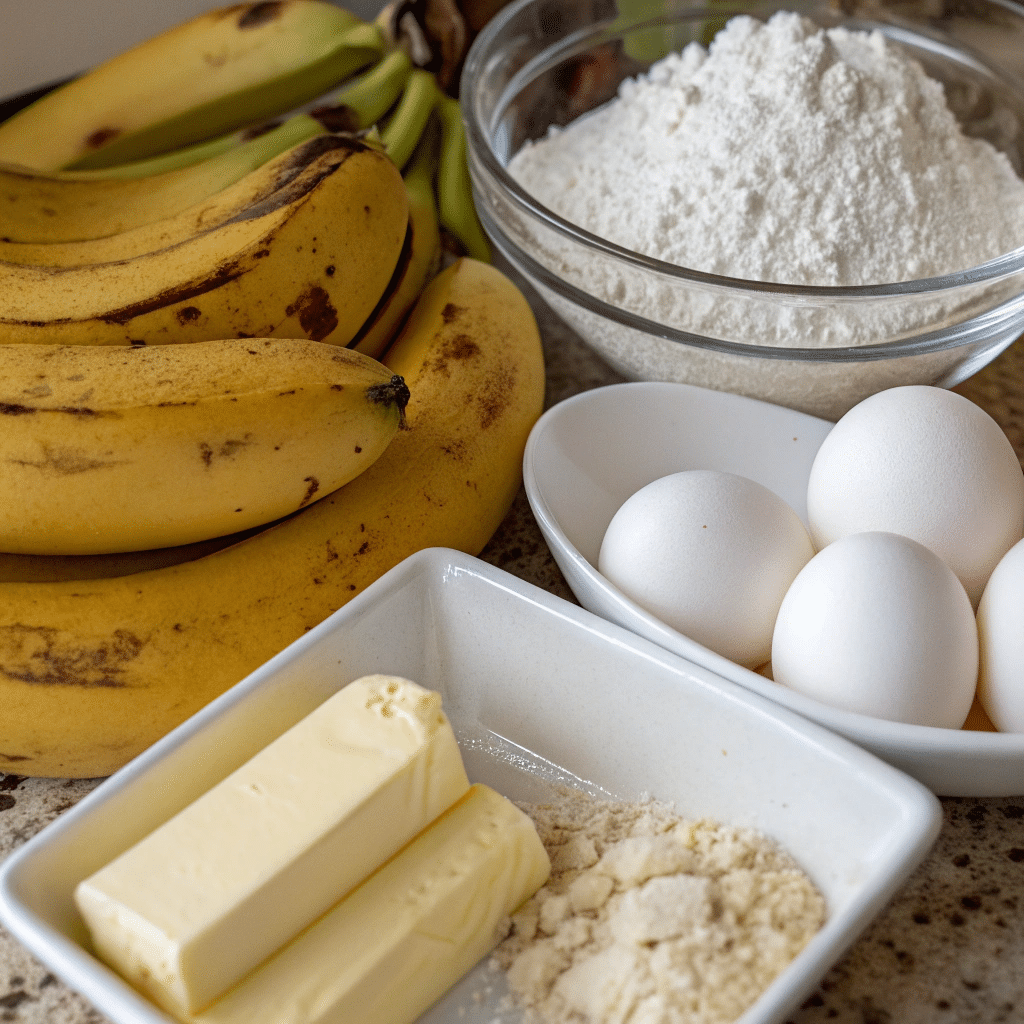
Step-by-Step Banana Bread Recipe No Baking Soda
Preparing Your Ingredients the Right Way
The first step in baking a successful banana bread recipe no baking soda is to prepare your ingredients properly. Start with three ripe bananas—the browner, the better. Mash them until smooth with just a few small lumps for texture. Next, measure out your dry ingredients: flour, sugar, and baking powder (your baking soda substitute). On the side, whisk together your wet ingredients: eggs, melted butter or oil, and milk. Preparing everything in advance makes the process smoother and prevents mistakes like forgetting an ingredient.
Mixing Techniques for the Perfect Texture
Banana bread is best when it’s moist and tender, which means you don’t want to overmix your batter. Follow the simple “wet meets dry” method:
- Combine the wet ingredients in one bowl.
- Combine the dry ingredients in another.
- Gently fold the dry mixture into the wet until just combined.
Stop mixing as soon as you no longer see streaks of flour. Overmixing activates the gluten in the flour, which can make your bread dense and chewy. If you’re adding extras like nuts or chocolate chips, fold them in gently at this stage.
Baking Instructions and Timing
Once the batter is ready, pour it into a greased 9×5-inch loaf pan. Smooth the top with a spatula, and if you’d like, sprinkle extra nuts or sugar on top for a crunchy finish. Bake in a preheated oven at 350°F (175°C) for 50–60 minutes, or until a toothpick inserted in the center comes out clean.
After baking, let the banana bread cool in the pan for about 10 minutes before transferring it to a wire rack. This step prevents the loaf from breaking apart and helps it firm up. For the best texture and flavor, wait until it cools completely before slicing—but if you can’t resist, enjoy a warm slice with butter.
Looking for a clean, low-impact health drink? Try our Natural Ozempic Recipe as a rotation option.

Substitutes for Baking Soda in Banana Bread
Baking Powder as a Substitute
The easiest and most effective substitute for baking soda in banana bread is baking powder. Unlike baking soda, baking powder already contains both the base and the acid needed to create carbon dioxide bubbles, which help the bread rise. For every teaspoon of baking soda your recipe calls for, use three teaspoons of baking powder. This ensures a light, fluffy loaf without any bitterness or metallic aftertaste.
Using Self-Rising Flour
Another excellent option is self-rising flour, which already includes leavening agents. If you use self-rising flour, you can skip both the baking soda and baking powder, since the flour itself contains the necessary lift. Just replace the all-purpose flour in your recipe with the same amount of self-rising flour. This substitution works best in simple recipes without too many additional acidic ingredients.
Yogurt, Buttermilk, or Vinegar as Alternatives
For those who prefer more natural or tangy flavors, yogurt, buttermilk, or vinegar can be used as substitutes. These ingredients don’t replace baking soda directly but can enhance the rise when paired with baking powder. For example:
- Yogurt: Use ½ cup of plain yogurt and reduce other liquids slightly.
- Buttermilk: Substitute ½ cup of buttermilk for regular milk in the recipe.
- Vinegar: Add 1 teaspoon of white vinegar or apple cider vinegar along with baking powder to boost the reaction.
These options not only improve the texture but also add subtle flavor notes that make banana bread even more delicious.
Don’t miss our natural metabolism booster—the Natural Ozempic Recipe, a great companion to this combo.
Common Mistakes When Making Banana Bread
Overmixing the Batter
One of the biggest mistakes bakers make when preparing banana bread recipe no baking soda is overmixing the batter. When you stir too much, the gluten in the flour becomes overdeveloped, leading to a tough and chewy loaf instead of the moist, tender texture you want. The key is to gently fold the ingredients together until you no longer see streaks of flour—lumps are perfectly fine.
Using Unripe Bananas
Bananas are the soul of banana bread, and using unripe bananas is a common error. Green or just-yellow bananas lack the natural sweetness and softness that overripe bananas bring. For the best results, always choose bananas with lots of brown spots or a dark peel. These bananas not only mash easily but also infuse the bread with deep flavor and moisture. Looking for inspiration?
Incorrect Oven Temperature
Another mistake is baking at the wrong oven temperature. If your oven runs too hot, the outside of the bread will brown quickly while the inside remains raw. Too low, and your bread may turn out dense and undercooked. Always preheat your oven to 350°F (175°C) and use an oven thermometer if possible for accuracy.
By avoiding these mistakes, you’ll consistently bake banana bread that is soft, flavorful, and perfectly baked—even without baking soda.
Variations of Banana Bread Recipe No Baking Soda
Gluten-Free Banana Bread Recipe No Baking Soda
If you’re sensitive to gluten or simply prefer to avoid it, you can still enjoy a moist and delicious banana bread without baking soda. Substitute all-purpose flour with a gluten-free flour blend that already includes xanthan gum for structure. Pair this with baking powder instead of baking soda, and you’ll have a loaf that rises nicely while staying soft. Adding almond flour or oat flour can also give your bread a nutty flavor and tender crumb.
Vegan Banana Bread Options
Banana bread can easily be made vegan without compromising on taste or texture. Replace the eggs with flax eggs (1 tablespoon ground flaxseed + 3 tablespoons water per egg) or applesauce. Swap butter for coconut oil or a plant-based butter alternative. Since bananas naturally act as a binder, they work perfectly in egg-free baking. Combined with baking powder, you’ll get a loaf that’s fluffy, moist, and 100% dairy- and egg-free.
Healthy Banana Bread with Oats or Whole Wheat Flour
For a more wholesome twist, try making banana bread with whole wheat flour or rolled oats. Whole wheat flour adds fiber and a nutty taste, while oats provide heartiness and texture. You can also reduce the sugar and replace it with honey or maple syrup for natural sweetness. Toss in walnuts or chia seeds for added nutrition. This version is perfect for those who want a healthier banana bread recipe no baking soda without sacrificing flavor.
Tips & Storage for Banana Bread Recipe No Baking Soda
How to Keep Banana Bread Moist Longer
One of the best parts of banana bread is its moist, tender crumb. To keep it that way, store your loaf in an airtight container or wrap it tightly in plastic wrap once cooled. Avoid refrigerating it, as that can dry it out. Instead, keep it at room temperature for up to 3 days. For even more moisture, you can brush the loaf with a light sugar syrup after baking, which locks in softness without making it soggy.
Freezing and Reheating Banana Bread
Banana bread freezes beautifully, making it a great make-ahead snack. To freeze, let the bread cool completely, then wrap it tightly in plastic wrap and foil. Store in the freezer for up to 3 months. When ready to enjoy, thaw the loaf at room temperature or reheat slices in the oven at 300°F (150°C) for 10 minutes. This restores the fresh-baked flavor and keeps the texture soft.
Serving Suggestions and Pairings
Banana bread is delicious on its own, but serving it with the right pairings can make it even better. Try spreading warm slices with butter, cream cheese, or nut butter. Pair it with a cup of coffee, tea, or hot cocoa for the perfect snack or breakfast. For a dessert-style twist, serve it with a scoop of vanilla ice cream or drizzle with chocolate sauce.
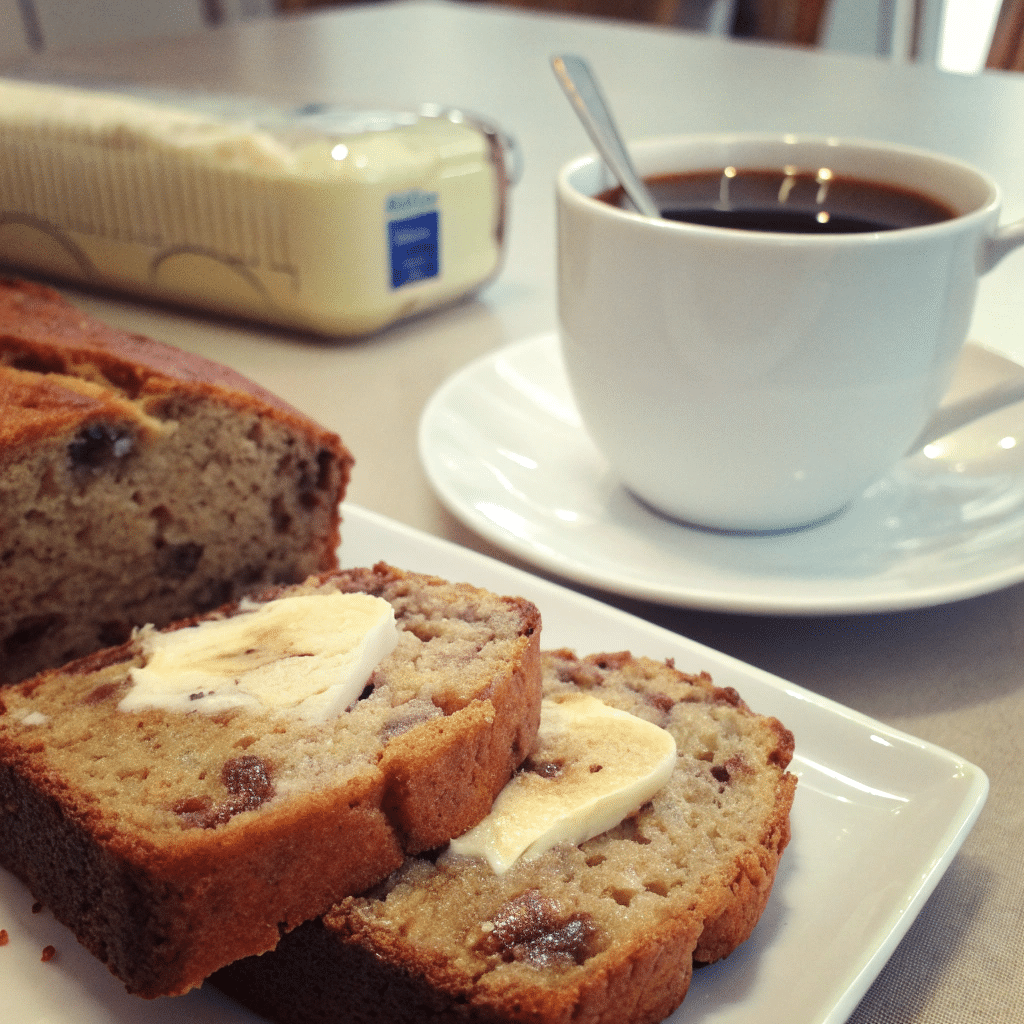
Conclusion About Banana Bread Recipe No Baking Soda
Final Thoughts on Banana Bread Recipe No Baking Soda
Making banana bread without baking soda is not only possible—it’s easy and just as delicious as the classic version. With the right substitutes like baking powder, self-rising flour, or even yogurt, you can bake a moist, flavorful loaf that rises beautifully. Whether you’re baking for breakfast, a snack, or dessert, this recipe is flexible enough to suit every taste and diet.
Encouragement to Experiment with Alternatives
The beauty of banana bread lies in its versatility. Don’t be afraid to experiment with different flours, add-ins, or natural substitutes to make it your own. Whether you prefer a healthy oat-based loaf, a vegan-friendly version, or a decadent chocolate chip twist, you can do it all without baking soda. So the next time your bananas ripen, you’ll know exactly how to whip up a loaf that’s foolproof, flavorful, and perfect for every occasion.
For more recipes Follow me in our Social media
Facebook: https://www.facebook.com/profile.php?id=61573913076847
Pinterest: https://www.pinterest.com/momandgrandmacooks/
Medium: https://medium.com/@momandgrandmacooks
FAQs About Banana Bread Recipe No Baking Soda
What is a substitute for baking soda in banana bread?
The best substitute for baking soda in banana bread is baking powder. Since it contains both an acid and a base, it helps the bread rise without needing extra ingredients. If you don’t have baking powder, you can also use self-rising flour or a mix of vinegar and baking powder to achieve similar results.
What will happen if I don’t add baking soda to banana bread?
If you skip baking soda entirely without using a substitute, your banana bread will likely turn out denser and flatter. It will still taste delicious, but it won’t have the same fluffy rise that baking soda provides. The texture will be more cake-like, and the crumb will feel heavier.
What else can I use if I don’t have baking soda?
Other options include buttermilk, yogurt, or self-rising flour. These ingredients, especially when combined with baking powder, create a light and airy texture. They also add subtle flavor notes, like tanginess from buttermilk or creaminess from yogurt, which complement the sweetness of bananas.
What is the number one mistake made when making banana bread?
The biggest mistake is overmixing the batter. When you stir too much, the gluten in the flour develops, making the bread tough instead of moist and tender. Always mix gently until just combined, even if the batter looks a little lumpy—that’s exactly how it should be.

